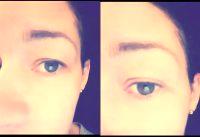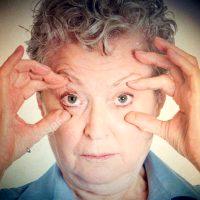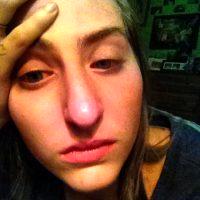Can Botox Cause Droopy Eyelids?
It is possible to cause the brow to droop if Botox is injected too low into the frontalis muscle, or if too much Botox is injected into the frontalis muscle. The outcome is temporary and your brow will return to its normal position once the Botox has worn off.
To achieve more of a lift and reduce the risk of the brow drooping, I prefer to treat the glabella region along with the frontalis muscle.
This approach gives a more balanced result. In the future, I would mention any concerns you have prior to your next Botox treatment so your risk for a droop can be minimized. (Joseph Serota, MD, Aurora Plastic Surgeon)
Yes Botox will occasionally cause a brow to droop. Especially if there is already some weakness.
It is caused by injecting either too close to the brow or using too much Botox, or both. It will clear in a few weeks.

Botox Mistakes
Fortunately it is a rare occurrence. (Maurice M. Vick, Jr., MD, Baton Rouge Urologist)
Botox Drooping Eyebrow
It is important to place Botox carefully in the frown region to avoid a lazy eye. When Botox is injected it needs to be placed approximately one centimeter above the medial brow in two locations on each side.
An additional injection is placed in the middle of the frown lines (between the 11’s) and sometimes lower at the nasal root to block the bunny lines. Sometimes a patient will have a mild unrecognized droopy eye already.
If Botox is placed too low in the brow a droopy eye can occur. If it happens it is a good idea to contact your practitioner and arrange for a return visit. Lopidine or phenylephrine eye drops helps to address the problem.

Drooping Eyelids Or Eyebrows Are Two Of The Most Common Botox Complaints
Eventually the droopiness of the eyelid will resolve in a few weeks or a few months. Preventing this from happening can help as well. Staying upright for at least four hours and avoiding exercise for 24 hours helps keeps Botox from excessively migrating into the eyelid. (Robert W. Sheffield, MD, Santa Barbara Plastic Surgeon)
Botox causing eyelid Droop
The botox injections have to be balanced – some above and some below the eyebrow. This is a technique that a good plastic surgeon uses all the time.
The frontalis and obicularis oculi muscles are “antagonistic muscle pairs” for eyebrow position – when one contracts the other relaxes – changing the eyebrow position.
The skill part of injecting botox is understanding the anatomy of the antagonistic muscle pairs in the face and injecting the right amount of botox in the right places to control the position of the eyelids.

Most Botox Side Effects Can Be Minimized
If too much botox was injected above your eyebrows that causing them to droop. The best correction for this problem is an botox injection into the antagonistic obicularis muscle. I also recommend that you seek a Board Certified Plastic Surgeon for all plastic surgery on soft tissues around the eye.
This includes Botox, Juvederm, Restylane, Eyelid surgery, Browlift and other surgical procedures. Board Certified Plastic Surgeons have 2 to 3 years of comprehensive formal plastic surgery training on the aesthetics, anatomy and function of the soft tissue, muscles and bone around the eye. (Daniel Reichner, MD, Newport Beach Plastic Surgeon)
Imbalanced delivery of Botox can cause brows and/or eyelids to droop.
As a targeted muscle relaxing medicine, Botox is a wonderful way to treat wrinkles, and to rebalance the muscles around the eye area to shape the brow. In the process, the brow can be lifted, or dropped, depending on the balance struck.

Negative Experiences With Botox
A lowered brow can cause the hooding. Return to your surgeon to see if adjustments can be made. If not, rest assured the condition will resolve spontaneously over a few weeks to months. (Laxmeesh Mike Nayak, MD, Saint Louis Facial Plastic Surgeon)
Botox Droop
Injecting Botox into the forehead can cause a droop of the brow. The muscle injected to treat horizontal forehead lines also serves to elevate the brow. If you relax the muscle that pulls the brow up it can lead to a droop.
Sometimes this can be fixed by injecting the muscles that pull the brow down (brow depressors). I think that it is important not to over inject the forehead. I made that mistake when I first started injecting Botox in 1997 when I thought if a little Botox is good then more must be better.

Post-Botox Drooping Is Not True Eyelid Ptosis
This is not the case and now I would rather under inject the forehead and do a small “touch up” a week or two later. (Jerome Potozkin, MD, Danville Dermatologic Surgeon)
Too much Botox causing eyebrow droop
Botox administered to the forehead ideally should weaken the muscle movement enough to minimize wrinkles while not completely eliminating all function (which would cause the brow to droop). Fortunately the Botox is not permanent and you can address the dose issue with your doctor prior to any future injection.
Sometimes double eyelids or baggy eyelids may be a sign that your peri-ocular concerns cannot be resolved by Botox alone. You may need surgery. (John Zavell, MD, FACS, Toledo Plastic Surgeon)
Too Much Botox May Cause Eyebrow Drooping
As long as you receive injections from a qualified surgeon, you shouldn’t suffer from any eyelid drooping or sagging. However ,injecting Botox too frequently or in higher-than-recommended doses can often weaken the muscles and inhibit their ability to support the skin and complete normal activities like blinking.
Additionally, the body may develop a resistance to Botox if it is administered too frequently. If both of your eyes feel “heavy” and your eyelids are drooping, then it’s entirely possible that you may have either received too many injections or received Botox in a too-high dose.
For the sake of your health, please refrain from receiving any more Botox injections at the moment and discuss your recent eye drooping with your plastic surgeon. If you continue to inject Botox, you will simply be making the issue worse.
If your sagging is severe enough where it causes you physical pain or impedes your vision, then an eyelift may be required. (Brian Vassar Heil, MD, Pittsburgh Plastic Surgeon)
See-saw Eyebrows
Botox can cause the eyelids to drop in position especially if too much is injected into the elevators of the forehead. The balance in eyebrow position depends on precise administration of botox into the depressors and the elevators of the forehead.

Some People Have Negative Experiences With Botox Because Of Side Effects
If too much botox is placed into the muscles that elevate the forehead, then the net result is a downward or heavy position to the eyelids often creating the look of a heavy upper eyelid, which in some patients can look masculine.
The opposite can be done if too much botox is placed into the depressors of the eyebrow (and none in the lateral forehead) and the net result can be a surprised or sinister (“Spock”) appearing eyebrow.
Both can be remedied, either by allowing the botox to wear off or by administering additional amounts to the opposite muscles to reverse the downward or upward pull of the eyebrow muscles. The procedure is similar to a “see-saw”, if botox is injected more heavily to one side, the result will be unequal. (David J. Myers, MD, Salt Lake City Dermatologic Surgeon)
Botox AND eyelids dropping
Botox in the forehead can definitely result in droopy eyelids. There is only one muscle that lifts the eyebrows- the frontalis- or forehead muscle. It basically spans across the whole forehead and interdigitates with the muscles near and between the eyebrows.
When we botox this muscle it eliminates the ability to truly lift the eyelids. Most injectors stay high up on the forehead ( near the hairline) as you could potentially risk dropping the eyebrows if you inject too close to them.
Additionally with time/ aging, brows will naturally droop down due to effects aging/ gravity. Once the Botox has worn off, you will have a better idea what the cause is. (Sapna A. Patel, MD, Seattle Facial Plastic Surgeon)
Botox quantity and placement can definitely effect eyebrow and eyelid position. If botox causes true ptosis (unable to raise eyelid), apracolidine 0.5% eyedrops could be prescribed by your injector. Dropped brows are the result of over weakened brow elevator muscles.

The Result Of Improper Botox Application
The good news is that these are temporary inconveniences and will gradually dissipate with time. If you use the same injector, make sure they evaluate this particular result. He or she will likely make a note on the location and quantity of neuromodulator placement so that this does not happen again in the future. (Eric Rosenberger, MD, Austin Otolaryngologist)
The way Botox works is by causing the muscles to temporarily weaken, therefore, reducing their activity. If the forehead or a neighboring muscle is over treated with Botox, it is very possible to cause droopy eyes.
The most important thing for you to do is bring this issue up to your doctor. At that point there are a few options to discuss. First you can wait for the Botox to wear off, and see if there is a visible improvement to your eyelids.
Second, your doctor can prescribe a prescription eye drop that can help the droopy eyelid. If your droopy eyebrow/eyelid continues, it may be a natural sign of aging. Then, the right option would be to either have a brow lift or a blepharoplasty. (Yael Halaas, MD, Manhattan Facial Plastic Surgeon)
